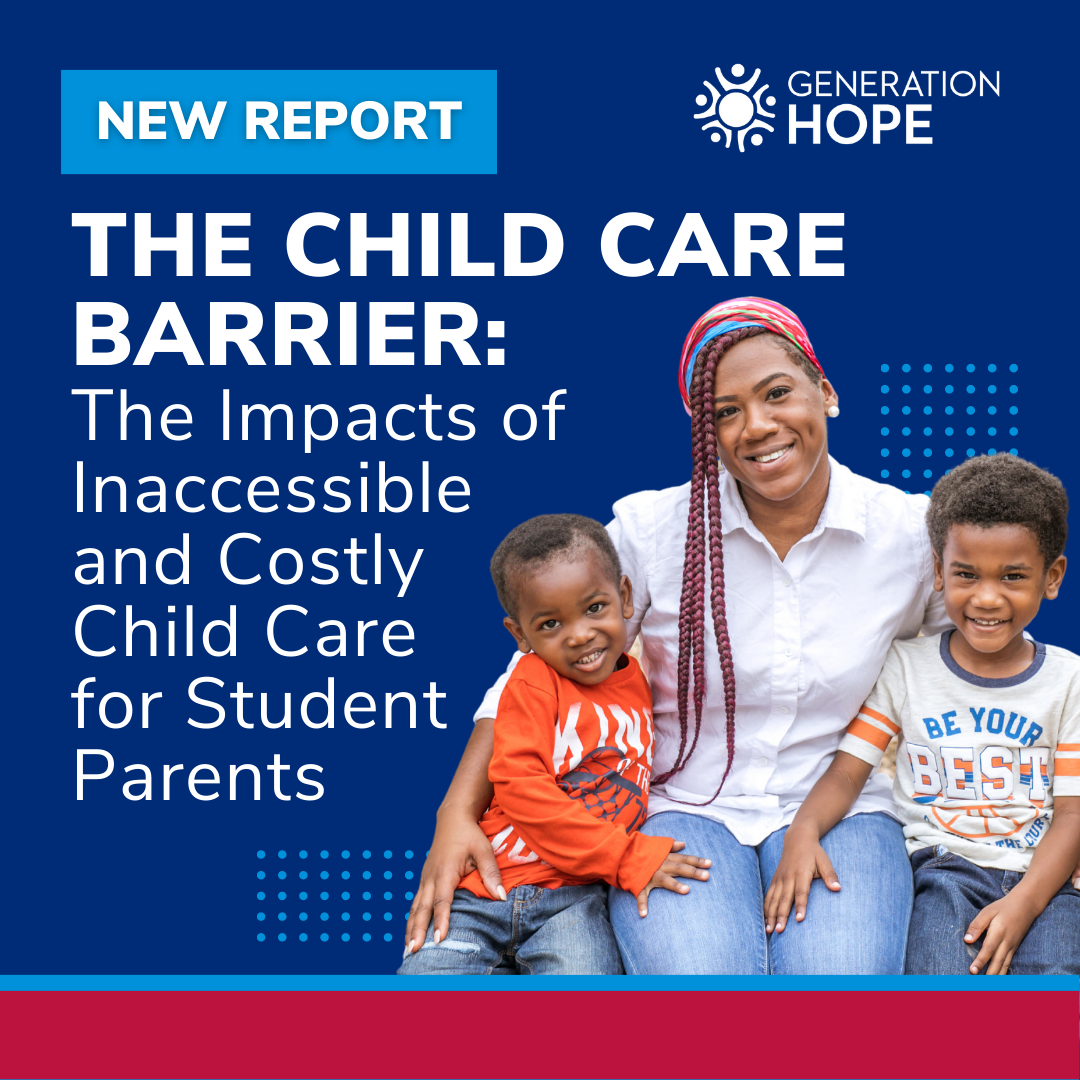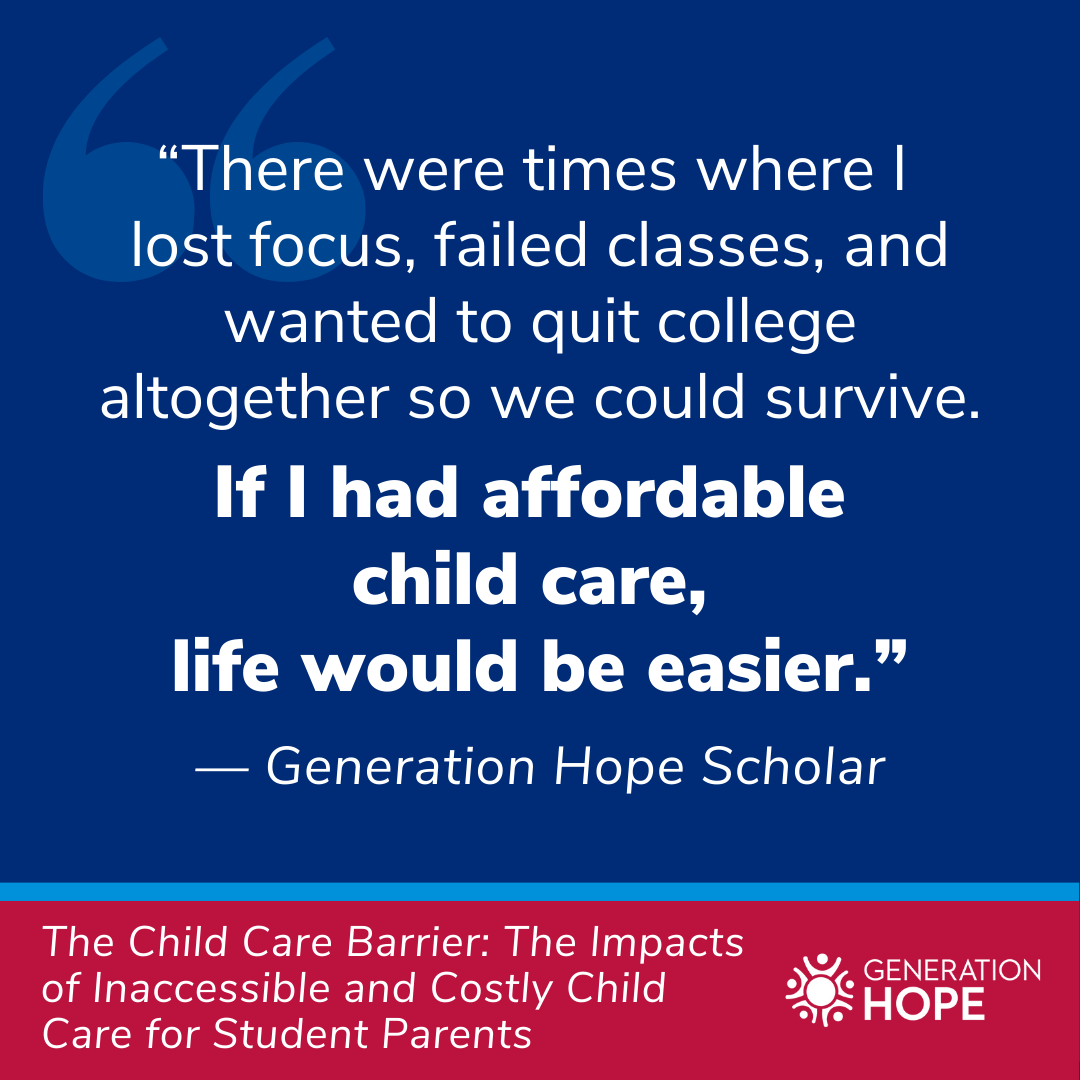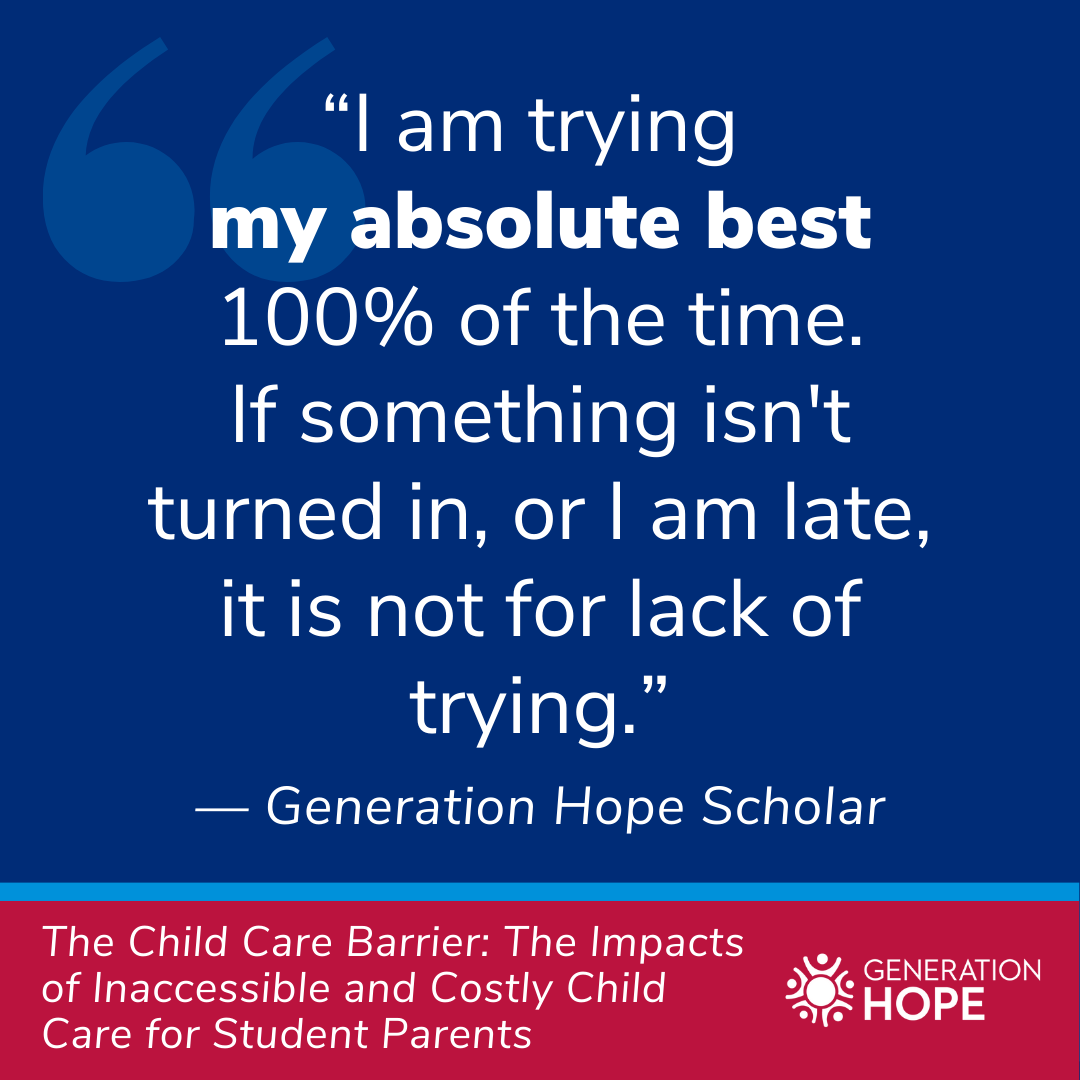
Report
The Child Care Barrier: The Impacts of Inaccessible and Costly Child Care for Student Parents
“The Child Care Barrier: The Impacts of Inaccessible and Costly Child Care for Student Parents” explores the complicated waters student parents navigate in order to pursue higher education while simultaneously caring for themselves and their families. Our findings clearly demonstrate the unaddressed caregiving needs and important experiences of student parents, especially those in the D.C. region.
We invite you to engage in one (or all!) of the following activities to help get the word out about this report:
Read the tweets from our Twitter chat to talk about the report and its major findings and to hear from our friends and partners in this work.
Watch a recording of our webinar to explore the report findings in greater detail.
Engage with and amplify the week-long Scholar takeover of our Instagram starting April 3rd, which focuses on child care access.
Spread the word! Please use this social media toolkit to quickly and easily share the report with your networks.
In surveying our Scholars, Generation Hope found consistent themes related to the impact that inaccessible and costly child care has on young student parents. Key findings include:
Teen parents juggle incredible responsibilities simultaneously. Nearly three-quarters of respondents provide 30+ hours of care for their child/ren each week while attending school.
An overwhelming majority of young student parents say their child care options are limited. Ninety-two percent of respondents either did not have access to or were unaware of on-campus child care options. Nearly 80% of respondents wished their campuses did more to support their child care needs.
A majority of young student parents use various supports to provide for their families on low incomes. Over 80% of respondents reported an annual household income below $30,000, and 86% were receiving some form of public aid. Nearly three-quarters relied on informal and/or unpaid child care (i.e. family, friends, neighbors, public school programming, etc.).
This survey also brings to the forefront key factors that reinforce disparities in child care support and post-secondary attainment for Black and Latinx students, families, and communities. Ninety-five percent of our respondents are students of color, and the significant barriers that they face in accessing consistent, quality child care mirror the experiences of families of color nationwide.
Download Report:
Connect With Us
In addition to providing direct, two-generation support to teen parents in college and their children as they prepare for kindergarten, Generation Hope advocates nationally for the needs of parenting college students and provides technical assistance to colleges and universities to increase their capacity to serve this population. For more information, please contact info@generationhope.org.
















